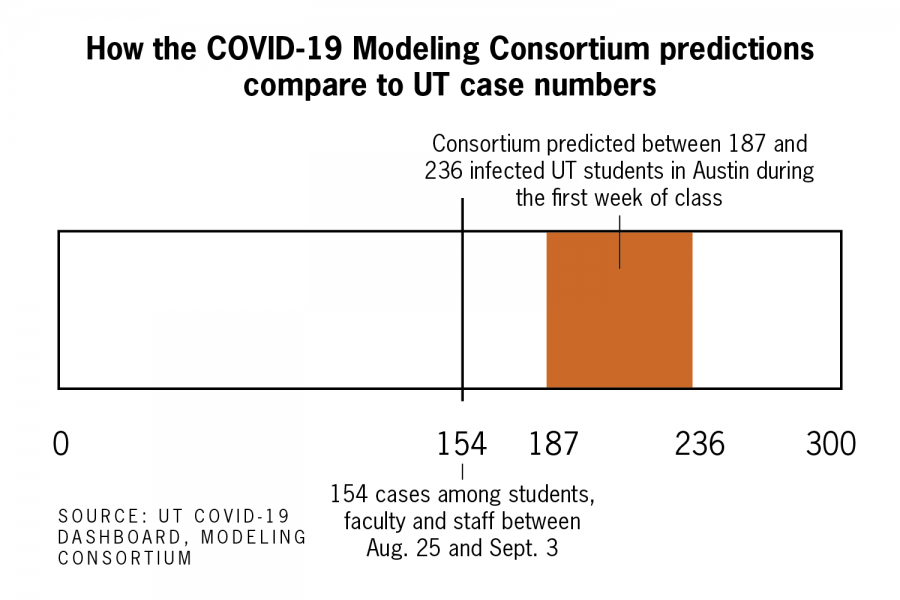COVID-19 cases lower than model consortium predictions
October 6, 2021
Editor’s Note: This story first appeared as part of the September 21 flipbook.
The number of positive COVID-19 cases in the UT community fell below UT’s COVID-19 modeling consortium predictions. Researchers say mitigation efforts by the University helped.
The University’s modeling consortium report estimated between 187 and 236 COVID-19-infected students during the first week of school. The COVID-19 dashboard reported 138 cases during the first week. Kaitlyn Johnson, a postdoctoral fellow and lead author of the report, said the fewer case numbers could be attributed to students following the University’s requirement to get tested before the first day of classes.
“Part of it was already lowered because we observed a number of students that did not return to campus because they actually did the required pre-arrival testing (and received a positive test),” Johnson said.
Additionally, Johnson said the estimates assumed students would arrive already infected with COVID-19 alongside no mitigation efforts.
Johnson said projections are never 100% accurate because research leaves room for a level of uncertainty as they continue to learn more about the virus and how it spreads.
Consortium director Lauren Ancel Meyers said proactive community testing plays a crucial role in understanding transmission through surveillance and detection of asymptomatic cases.
“Students are increasingly using PCT testing, we’re hoping more students are getting vaccinated and taking basic precautions to prevent transmission if they might have been exposed or they have a choice between wearing masks on a daily basis,” said Meyers, a biology, population health and statistics professor.
Art Markman, head of the academic working group for COVID-19 planning, said the UT community should use resources the University makes available to get tested and vaccinated to slow the spread of COVID-19.
“Our goal as a university is to try to spend our resources to keep people safe but (also) do the best job we can educating students,” Markman said. “The dollars that we have to spend on testing are necessary given the state of the pandemic, but they are not going directly towards student education.”



